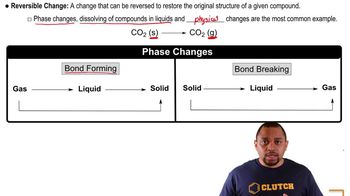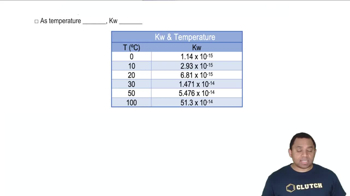Here are the essential concepts you must grasp in order to answer the question correctly.
Equilibrium Constant (Kc)
The equilibrium constant, Kc, quantifies the ratio of the concentrations of products to reactants at equilibrium for a given reaction at a specific temperature. It is expressed as Kc = [products]^[coefficients] / [reactants]^[coefficients]. A small Kc value, like 7.5×10^−9, indicates that at equilibrium, the concentration of reactants is much greater than that of products.
Recommended video:
Equilibrium Constant Expressions
Reversibility of Reactions
Chemical reactions are often reversible, meaning the products can react to form the original reactants. The equilibrium constant for the reverse reaction is the reciprocal of the forward reaction's Kc. For the reaction 2 NO(g) → N2(g) + O2(g), the Kc can be calculated as 1/(7.5×10^−9), reflecting the relationship between the forward and reverse reactions.
Recommended video:
Reversible Changes in Matter
Temperature Dependence of Kc
The value of the equilibrium constant, Kc, is temperature-dependent. Changes in temperature can shift the position of equilibrium and alter the concentrations of reactants and products. Therefore, when calculating Kc for a reaction at a different temperature, it is essential to consider that Kc values are specific to the temperature at which they are measured.
Recommended video:
Kw Temperature Dependence





